Photo Essay: Green is Golden
A photographic tribute to North America's most popular waterfowl species
A photographic tribute to North America's most popular waterfowl species
For many waterfowlers, it's all about the green-greenheads that is.
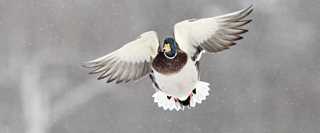
Photo © Michael Furtman
North America has the good fortune of having more mallards than any other continent, and the birds are bountiful seasonal visitors across most of the United States and Canada.
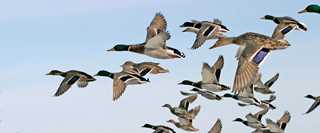
Photo © Michael Furtman
The mallard is successful because it is adaptable. Unlike some other species of waterfowl that have very specific habitat and food requirements, mallards thrive in just about any type of wetland habitat imaginable and consume a highly varied diet. This allows them to exploit productive new habitats and food sources as they emerge on the landscape.
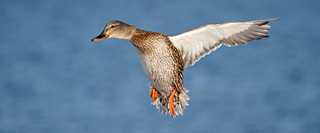
Photo © Michael Furtman
Most hen mallards build their nests in grassland and underbrush, but some hens regularly set up housekeeping in such odd places as hollow stumps, hedges, muskrat huts, rooftops, duck blinds, and even open mailboxes. Their persistence in breeding and resourceful selection of nesting sites enables mallards to hatch broods in some surprising places, such as intensively cultivated farmland and densely populated suburbs.
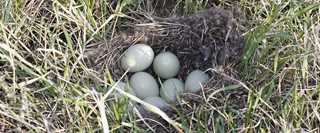
Photo © Michael Furtman
Mallards are also among the most prolific breeders in the waterfowl world. As long as suitable wetland habitat is available, they will usually attempt to nest two or three times if their earlier nesting attempts are unsuccessful, and some especially dedicated hens have been observed making five nesting attempts in a single season.
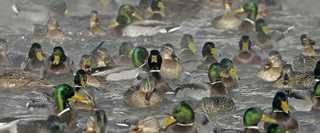
Photo © Michael Furtman
The single-most-important breeding area for midcontinent mallards, as well as for most other species of ducks, is the famed Prairie Pothole Region of United States and Canada.

Photo © Michael Furtman
All waterfowlers over 30 years of age remember the record prairie drought of the 1980s and early 1990s, when midcontinent mallard numbers declined to near-record lows. Older duck hunters may recall an equally severe drought during the 1960s that also ravaged the pothole country. During the dark days of the most recent duck depression, some members of the waterfowl-management community predicted that mallard populations would never recover to levels of the 1970s.
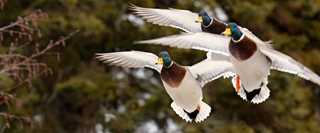
Photo © Michael Furtman
But when wet weather returned to the prairies in 1994, mallards and most other prairie duck populations boomed. In 1999, the estimated mallard breeding population in the traditional survey area reached 10.8 million, the second-highest-recorded population since surveys were initiated in 1955.
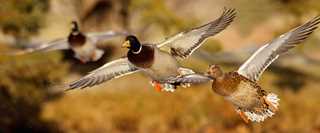
Photo © Michael Furtman
In fact, mallard populations throughout the late 1990s were comparable to those of the late 1950s-the period hailed by many as the modern apex for prairie waterfowl-and exceeded mallard numbers of the early 1970s. In recent years, mallard numbers have remained at healthy levels, near the long-term average.
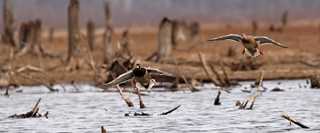
Photo © Michael Furtman
DU and its partners in the North American Waterfowl Management Plan are working against the clock to permanently protect the most productive waterfowl habitat remaining on the prairies by purchasing cost-effective wetland and grassland easements and directly acquiring property from private landowners.
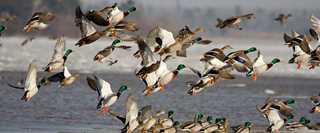
Photo © Michael Furtman
Promoting wildlife-friendly public policies is another important component of DU's conservation strategy. In Washington, D.C., DU is working closely with the Administration and Congress to ensure that wetlands remain protected and that key conservation programs such as CRP, the Wetlands Reserve Program, and North American Wetlands Conservation Act are fully funded. In Canada, DU is working closely with federal officials to develop comparable conservation programs, which, if fully implemented, will have tremendous benefits for continental waterfowl populations.
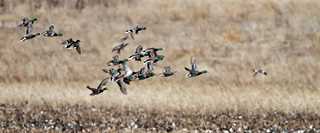
Photo © Michael Furtman
Waterfowlers are fortunate that such a highly prized bird as the mallard is also so abundant and widely distributed. Mallards have proven time and again that, given sufficient habitat, they can flourish, even in ecosystems dramatically altered by man.
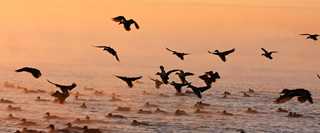
Photo © Michael Furtman
Ducks Unlimited is the only conservation organization working to conserve waterfowl habitat throughout the mallard's vast continental range, from Alaska to the Gulf Coast. And, with their habitats under siege like never before, DU and its partners in the North American Waterfowl Management Plan must strengthen their efforts to help ensure a bright future for the mallard and other waterfowl.
Ducks Unlimited uses cookies to enhance your browsing experience, optimize site functionality, analyze traffic, and deliver personalized advertising through third parties. By continuing to use this site, you agree to our use of cookies. View Privacy Policy